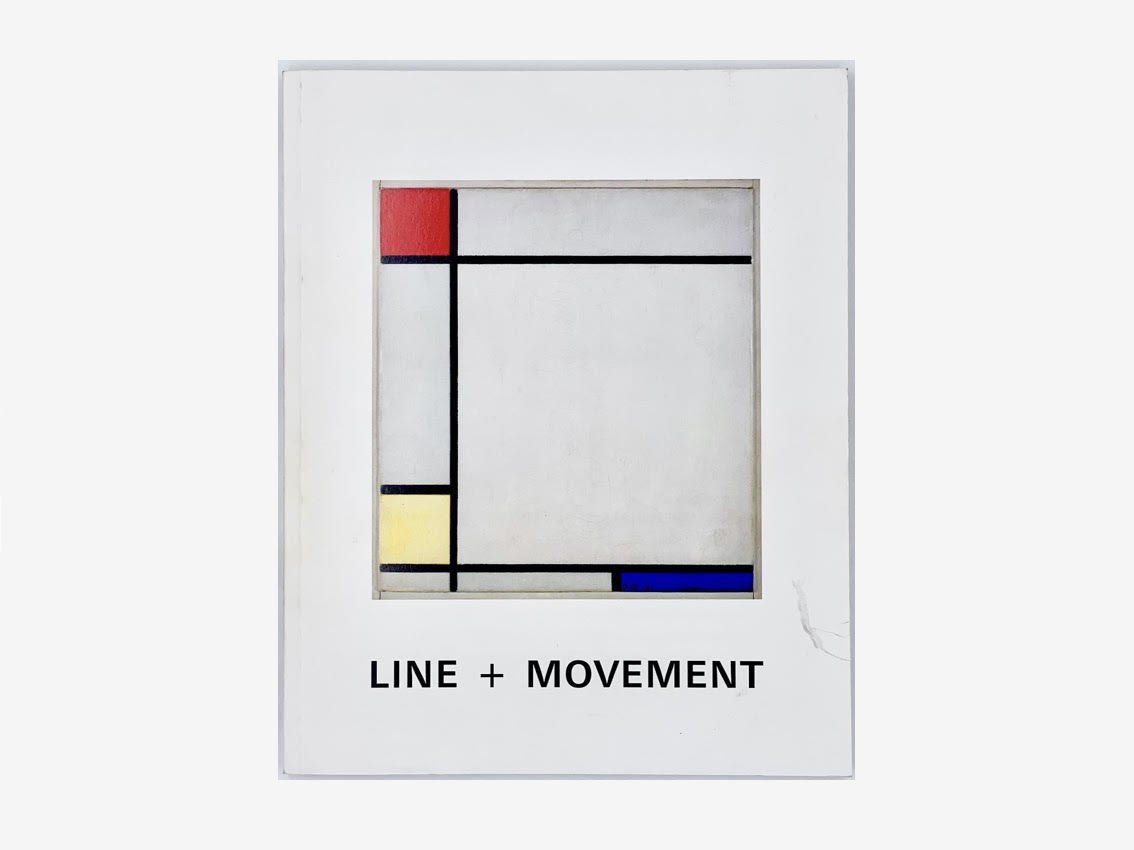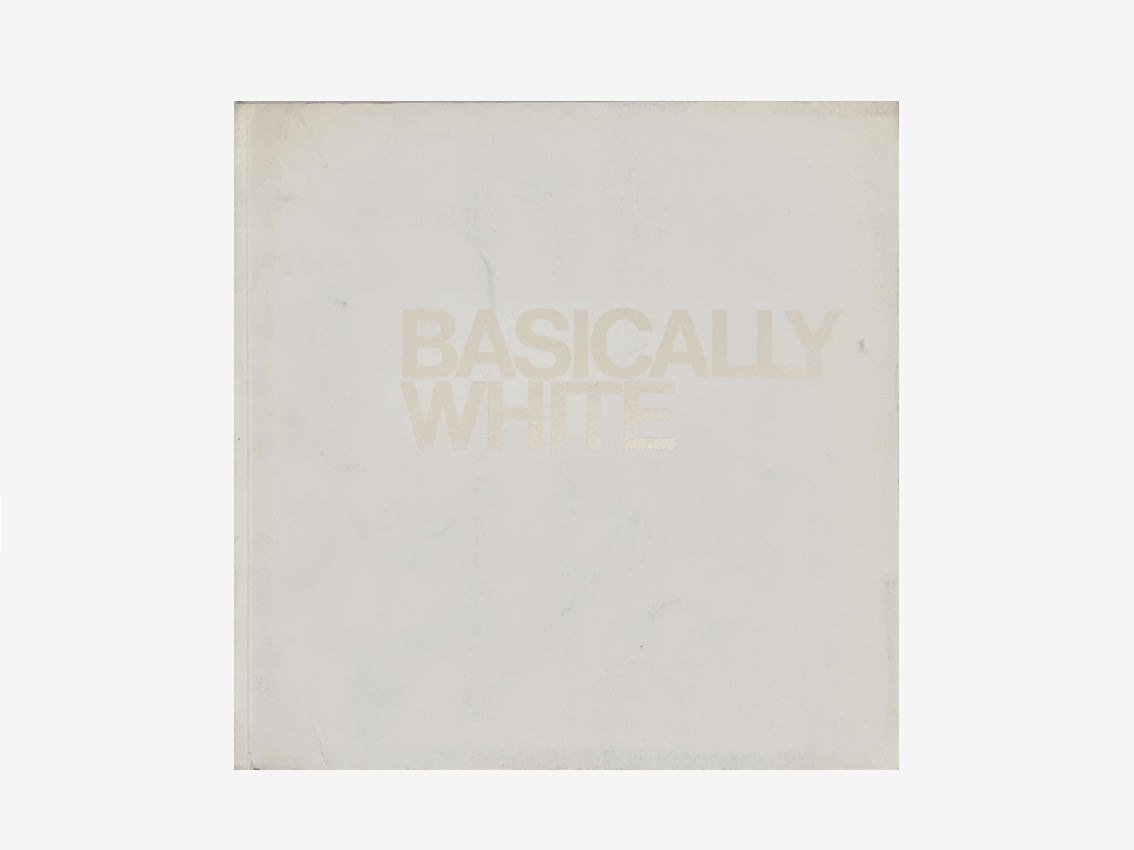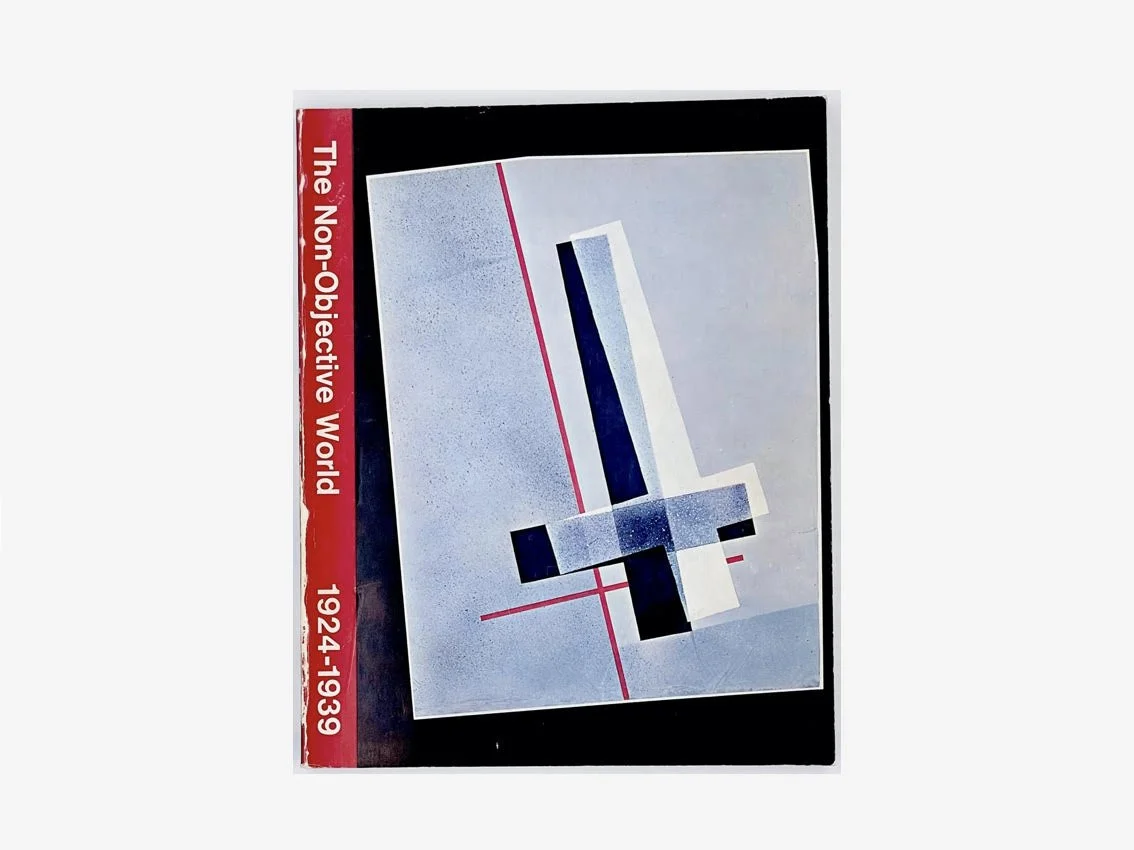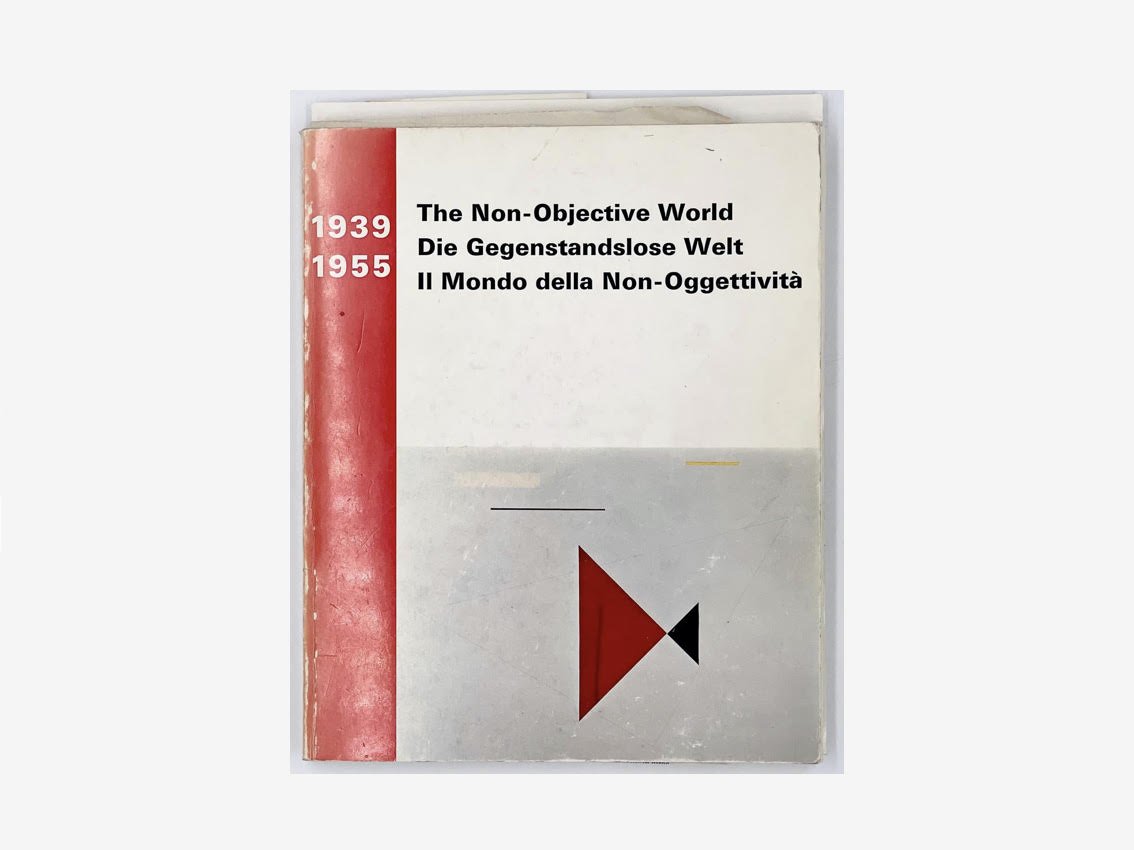 Image 1 of 1
Image 1 of 1


J.W. Power, Elements de la Construction Picturale, 1933
Arguably Australia’s most important avant-gardist of the early twentieth century, J. W. Power studied in Paris with Pedro Araujo and Fernand Léger during the inter-war years and showed with Léonce Rosenberg and Galerie Jeanne Buche. He was a founding and long-term member of the Paris-based group , Abstraction-Création, which held close ties with the Seven and Five Society and Unit One, including members Barbara Hepworth, Henry Moore, Ben Nicholson, Paul Nash and John Piper. In 1934 Power had the first one-person exhibition at Abstraction-Création’s gallery at 44 Avenue de Wagram.
Ten years in the making, “Elements de la Construction Picturale” details how over several centuries artists have borrowed from and extended past compositional methods and systems of proportion. Revealing Power’s deep knowledge of art and mathematics, it was published in 1933 bound in white boards decorated with a mathematical diagram and was the first artist book made by an Australian artist. It was received to great acclaim when launched at an exhibition which Power shared with Jean Lurçat and André Masson at the Galerie Jeanne Bucher. Much later, the book was discovered by and became of great importance to the post-war English constructivists such as Victor Pasmore, Adrian Heath and Kenneth and Mary Martin.
“Elements de la Construction Picturale” includes 6 pockets at rear with envelopes of loosely inserted prints of Raphael's The Crucifixion, Rubens’ Le Petit Jugement dernier, Duccio’s Noli me Tangere, Raphael’s Disputa, Juan Gris’ Nature Morte (Cubiste) and Signorelli’s Adoration de l’Efant Jésus.
Original publisher's white cloth backed cream illustrated paper covered boards, lettered black at front, with label lettered black at spine.
Title: Elements de la Construction Picturale: Aperçu Des Méthodes Des Maitres Anciens Et Des Maitres Modernes
Author: J. W. Power
Publisher: Aux Editions Antoine Roche, Paris
Publication date: 1933
Format: Hardcover
Total Pages: 101pp.
Images: Extensively illustrated in black and white throughout.
Provenance: The Library of Dr Alastair Grieve
Stock Number: RB02361
The text below which outlines the background of the publication and reception of “Elements de la Construction Picturale”, is quote from, “J.W.Power Abstraction-Création Paris 1934”, by A.D.S Donaldson and Ann Stephen, which can be can be purchased at this link https://shop.powerpublications.com.au/products/test-3
“In the midst of the Parisian avant-garde in 1932, Power released Éléments de la Construction Picturale, his analysis of painting and the history of its relation to geometry, the first artist-book by an Australian. Published by Antoine Roche, well known not only for producing lavish limited editions books but also for being ‘a wealthy dilettante, very cultured, an opium addict and a homosexual.’ Power’s book may also have been produced in conjunction with his friend Rose Adler, the renowned bookbinder. It was she who designed the striking snakeskin binding for Matila Ghyka’s Esthétique des proportions dans la nature et dans les arts (1927), a book Power owned and admired, calling it ‘by far the most profound and exhaustive work on proportion’. Both Power’s and Ghyka’s book-covers make use of a mirror design, Power’s more austere cover reproduced his mathematical diagram for squaring out a canvas on its front and back. His book is foremost an attempt to connect then contemporary painting to the past – through the work of Duccio, Raphael, Rubens, and Gris – it aims to show how artists have borrowed from and extended past compositional methods and systems of proportion. It includes a back pocket section containing a photographic reproduction of a work by each of the artists with various diagrams and celluloid overlays for analysing each work. Power intended that ‘these should be placed upon the photograph one at a time in numerical order while reading the description.’ Ten years in the making, it can be seen as Power’s farewell to Cubism, a movement he described as both ‘the very symbol of liberation and the means towards one of the purest aesthetic periods in history.’ The precision of his analysis testifies to how he harnessed his own deep knowledge of art and mathematics to move towards abstraction. In 1939 his psychedelic L’homme calculateur, surely in part a self-portrait, was published in Christian Zervos’s XXe siècle Celebrated in Paris, Power’s book was launched at an exhibition he shared with Jean Lurçat and André Masson at the Galerie Jeanne Bucher in June 1933, a show that marked his move from Rosenberg to Bucher. Léopold Survage was among the artists who responded to this work, sending Power his monograph inscribed with the words, ‘in thanks for your beautiful book and your work … which has added to the valuable knowledge of painters… .’ Called by the art critic Marcel Zahar ‘a monument of science’, significantly Power’s book was recognised by the communist art historian Konrad Farner in the catalogue for the landmark 1936 exhibition Theses, Anti-theses, Syntheses in Luzern. In his ‘Bibliografie’ Farner lays out an intellectual tradition for abstraction, and under the category ‘mathematik’, lists Éléments de la Construction Picturale, describing a lineage that runs: ‘Fiedler – Marés – Hildebrand – Dehio – Hölzel – Fischer – Power – Kandinsky – Moholy’. That same year the Italian art historian Lionello Venturi, in his comprehensive study History of Art Criticism (1936) placed Power’s book alongside those by other cubist painters such as André Lhote, Gleizes and Ozenfant. Venturi wrote that it provided a post-cubist synthesis capable of reconciling the sensorial with the ideal through ‘the ascendency of sensation … expressed in purely geometric terms.’ Indeed Lhote would also cite Power’s book in his own influential Treatise on Landscape Painting (1939), a book that was known to Australian artists from this time on, and in it he acknowledged Power’s ‘ingenious system of mechanics’. Perhaps its most enduring legacy, however, was on the art of a generation of post-war English constructivists such as Victor Pasmore, Adrian Heath and Kenneth and Mary Martin who seized upon Power’s exposition of the ‘moving format’, an analytical procedure for creating movement by rotating a geometric unit across the picture plane, as the basis of their constructions. Power also wrote for Abstraction-Création, the group’s annual cahier. In the first issue Power, in common with other members, identified abstraction with freedom, acknowledging ‘the accomplishments of Cubism, Expressionism, Constructivism, Surrealism and pure abstraction. While the material world struggles and groans under the burden of financial and political crisis, we, the creators of the spiritual world, painters, sculptors, writers, poets, musicians, are richer than ever in our means of expression.’
Arguably Australia’s most important avant-gardist of the early twentieth century, J. W. Power studied in Paris with Pedro Araujo and Fernand Léger during the inter-war years and showed with Léonce Rosenberg and Galerie Jeanne Buche. He was a founding and long-term member of the Paris-based group , Abstraction-Création, which held close ties with the Seven and Five Society and Unit One, including members Barbara Hepworth, Henry Moore, Ben Nicholson, Paul Nash and John Piper. In 1934 Power had the first one-person exhibition at Abstraction-Création’s gallery at 44 Avenue de Wagram.
Ten years in the making, “Elements de la Construction Picturale” details how over several centuries artists have borrowed from and extended past compositional methods and systems of proportion. Revealing Power’s deep knowledge of art and mathematics, it was published in 1933 bound in white boards decorated with a mathematical diagram and was the first artist book made by an Australian artist. It was received to great acclaim when launched at an exhibition which Power shared with Jean Lurçat and André Masson at the Galerie Jeanne Bucher. Much later, the book was discovered by and became of great importance to the post-war English constructivists such as Victor Pasmore, Adrian Heath and Kenneth and Mary Martin.
“Elements de la Construction Picturale” includes 6 pockets at rear with envelopes of loosely inserted prints of Raphael's The Crucifixion, Rubens’ Le Petit Jugement dernier, Duccio’s Noli me Tangere, Raphael’s Disputa, Juan Gris’ Nature Morte (Cubiste) and Signorelli’s Adoration de l’Efant Jésus.
Original publisher's white cloth backed cream illustrated paper covered boards, lettered black at front, with label lettered black at spine.
Title: Elements de la Construction Picturale: Aperçu Des Méthodes Des Maitres Anciens Et Des Maitres Modernes
Author: J. W. Power
Publisher: Aux Editions Antoine Roche, Paris
Publication date: 1933
Format: Hardcover
Total Pages: 101pp.
Images: Extensively illustrated in black and white throughout.
Provenance: The Library of Dr Alastair Grieve
Stock Number: RB02361
The text below which outlines the background of the publication and reception of “Elements de la Construction Picturale”, is quote from, “J.W.Power Abstraction-Création Paris 1934”, by A.D.S Donaldson and Ann Stephen, which can be can be purchased at this link https://shop.powerpublications.com.au/products/test-3
“In the midst of the Parisian avant-garde in 1932, Power released Éléments de la Construction Picturale, his analysis of painting and the history of its relation to geometry, the first artist-book by an Australian. Published by Antoine Roche, well known not only for producing lavish limited editions books but also for being ‘a wealthy dilettante, very cultured, an opium addict and a homosexual.’ Power’s book may also have been produced in conjunction with his friend Rose Adler, the renowned bookbinder. It was she who designed the striking snakeskin binding for Matila Ghyka’s Esthétique des proportions dans la nature et dans les arts (1927), a book Power owned and admired, calling it ‘by far the most profound and exhaustive work on proportion’. Both Power’s and Ghyka’s book-covers make use of a mirror design, Power’s more austere cover reproduced his mathematical diagram for squaring out a canvas on its front and back. His book is foremost an attempt to connect then contemporary painting to the past – through the work of Duccio, Raphael, Rubens, and Gris – it aims to show how artists have borrowed from and extended past compositional methods and systems of proportion. It includes a back pocket section containing a photographic reproduction of a work by each of the artists with various diagrams and celluloid overlays for analysing each work. Power intended that ‘these should be placed upon the photograph one at a time in numerical order while reading the description.’ Ten years in the making, it can be seen as Power’s farewell to Cubism, a movement he described as both ‘the very symbol of liberation and the means towards one of the purest aesthetic periods in history.’ The precision of his analysis testifies to how he harnessed his own deep knowledge of art and mathematics to move towards abstraction. In 1939 his psychedelic L’homme calculateur, surely in part a self-portrait, was published in Christian Zervos’s XXe siècle Celebrated in Paris, Power’s book was launched at an exhibition he shared with Jean Lurçat and André Masson at the Galerie Jeanne Bucher in June 1933, a show that marked his move from Rosenberg to Bucher. Léopold Survage was among the artists who responded to this work, sending Power his monograph inscribed with the words, ‘in thanks for your beautiful book and your work … which has added to the valuable knowledge of painters… .’ Called by the art critic Marcel Zahar ‘a monument of science’, significantly Power’s book was recognised by the communist art historian Konrad Farner in the catalogue for the landmark 1936 exhibition Theses, Anti-theses, Syntheses in Luzern. In his ‘Bibliografie’ Farner lays out an intellectual tradition for abstraction, and under the category ‘mathematik’, lists Éléments de la Construction Picturale, describing a lineage that runs: ‘Fiedler – Marés – Hildebrand – Dehio – Hölzel – Fischer – Power – Kandinsky – Moholy’. That same year the Italian art historian Lionello Venturi, in his comprehensive study History of Art Criticism (1936) placed Power’s book alongside those by other cubist painters such as André Lhote, Gleizes and Ozenfant. Venturi wrote that it provided a post-cubist synthesis capable of reconciling the sensorial with the ideal through ‘the ascendency of sensation … expressed in purely geometric terms.’ Indeed Lhote would also cite Power’s book in his own influential Treatise on Landscape Painting (1939), a book that was known to Australian artists from this time on, and in it he acknowledged Power’s ‘ingenious system of mechanics’. Perhaps its most enduring legacy, however, was on the art of a generation of post-war English constructivists such as Victor Pasmore, Adrian Heath and Kenneth and Mary Martin who seized upon Power’s exposition of the ‘moving format’, an analytical procedure for creating movement by rotating a geometric unit across the picture plane, as the basis of their constructions. Power also wrote for Abstraction-Création, the group’s annual cahier. In the first issue Power, in common with other members, identified abstraction with freedom, acknowledging ‘the accomplishments of Cubism, Expressionism, Constructivism, Surrealism and pure abstraction. While the material world struggles and groans under the burden of financial and political crisis, we, the creators of the spiritual world, painters, sculptors, writers, poets, musicians, are richer than ever in our means of expression.’






















